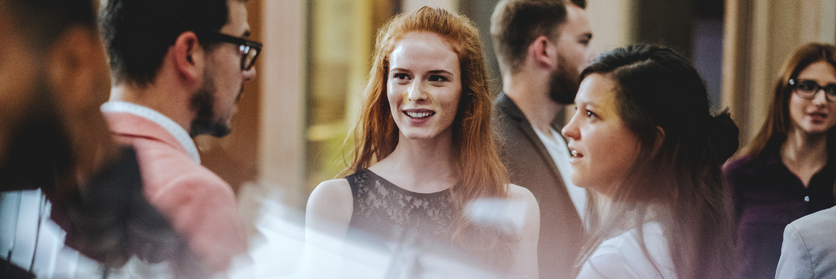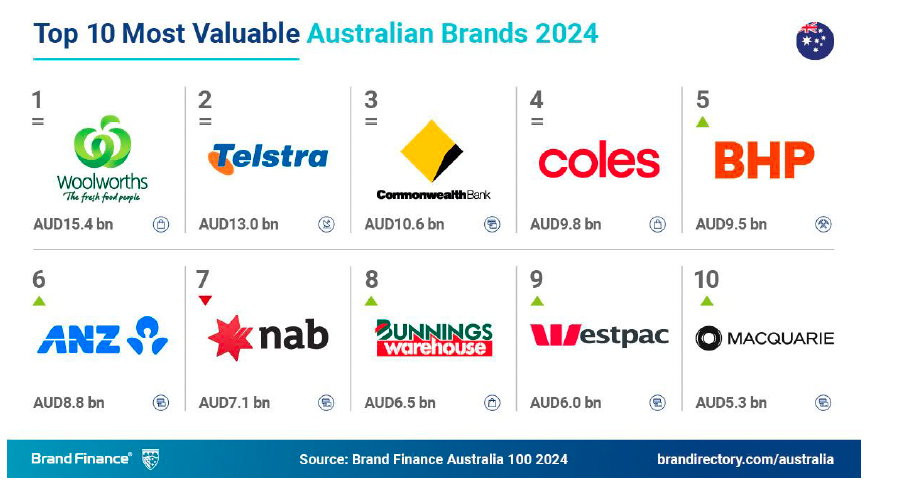Brand resilience: Suncorp’s Mim Haysom launches next phase with talking houses, hyper-personalisation, ‘ethical AI’ – but ‘creepy’ line not crossed

What you need to know:
- Suncorp has taken the wrappers off its latest resiliency brand play: A personalised digital tool that uses the persona of your home to talk about extreme weather peril risk and how to practically improve property resiliency.
- Two years in the making, the utility uses raft of data including from CoreLogic (to identify property insights including property age and type), geospatial location, WillyWeather realtime and future weather data, plus Suncorp’s proprietary natural peril risk data. The tool is made possible through a mix of live APIs, including Google APIs, plus AI technology.
- Information is presented as a tailored video narrated by the individual’s own home persona, with visualisations via 3D tiles and Google Street View, and recommendations on what to do to better shore up the resilience of the property. There are also local hardware store recommendations plus a tailored report on practical resilience tips.
- According to newly released Suncorp risk peril data, 2.7 million Australian homes are at risk of extreme weather conditions.
- Creepiness is not a worry for this CMO, who says adding value is the key to successful personalisation at scale.
-
Suncorp’s multi-year resilience brand push continues to pay dividends, says Mim Haysom. Since its first One House work in 2021, brand consideration has lifted 7 per cent, NPS is up 6.6 points, and market share has lifted 4 per cent. In addition, there’s been an 18 per cent year-on-year rise in requests for resilience features over the last three years and an extra $2.6bn in Government funding for resiliency work.
It’s been six years since Suncorp Group’s marketing chief Mim Haysom began an ambitious brand play aimed at switching the narrative from recovery to resilience. The first iteration, Suncorp’s award-winning One House project in 2021, manifested the science of how to make properties more resilient to bushfires, floods and cyclones through a prototyped home and documentary. This was followed up with Resilience Road in 2022, structurally strengthening five existing family homes across one of Rockhampton’s disaster-prone towns.
From a brand perspective, it’s been paying incremental dividends ever since, according to the CMO. Brand consideration has lifted 7 per cent, NPS is up 6.6 points, and market share has lifted 4 per cent. Also significant are also the government and community milestones chalked up Suncorp lays some claim to. Builder data shows, for example, an 18 per cent year-on-year rise in requests for resilience features over the last three years. In Bundaberg, advocacy contributed to the approval of $174.7 million worth of resilience infrastructure work, and in working with government and playing a role in advocacy, Suncorp also takes some credit for spurring the Government to commit an additional $2.6 billion in resilience funding through the Commonwealth Disaster Ready Fund and Resilience Homes Fund.
So it should be no surprise Suncorp’s latest big brand bet is a continuation of advocating for more resilient homes, Haysom tells Mi3. But this times, the insurer has gone big on scaled personalisation, data utilisation and digital tooling to hammer its point home.
Suncorp this week has debuted ‘Haven’, a digital tool to help homeowners understand the level of extreme weather risk they may be exposed to at an individual property level. To do this, it’s aggregating a raft of data including from CoreLogic (to identify property insights including property age and type), geospatial location, WillyWeather real-time and future weather data, plus Suncorp’s proprietary natural peril risk data. The tool is made possible through a mix of live APIs, including Google APIs, plus what it’s calling “ethical AI” technology.
Information is presented as a tailored video narrated by the individual’s own home persona, with visualisations via 3D tiles and Google Street View, and recommendations on what to do to better shore up the resilience of the property. There are also local hardware store recommendations plus a tailored report on practical resilience tips.
According to Suncorp data, 2.7 million Australian addresses are at high risk of at least one extreme weather peril such as bushfires, floods, cyclones and storms.
“What we’re trying to do is really personalise and make the resilience experience relevant for every Australian on a personal and address level,” says Haysom. “For us, it was a very natural extension and the next iteration of how we help every Australian become more resilient.”
The new tool is being supported by what Haysom describes as a traditional integrated engagement campaign including TV, out-of-home, cinema, social and influencer plus digital channels such as YouTube and Spotify, largely targeting Queensland.
Ethical personalisation?
Despite the highly personalised nature of the data presented, Haysom isn’t worried Haven crosses any creepy line with consumers. Suncorp and creative agency partner, Leo Australia, have created about five main personas to suit the mix of age groups and property types those engaging with Haven may represent.
“You can get to a level of personalisation and knowledge of data on a customer to a level where they’re comfortable they’re receiving true value back from you having that knowledge,” Haysom argues. “A lot is a consolidation of publicly available information, truth be told – it’s live APIs and AI technologies, it’s leveraging Google APIs, geospatial type technology, CoreLogic – all of those are actually publicly available data sources. We are not actually accessing data in a creepy way. All we’re doing is consolidating data that already exists and adding into it our own knowledge of weather, natural perils and risk data to help provide that deep, knowledgeable view of a residential address a customer puts in.
“When you go online, we don’t go ‘here’s Nadia, here’s her address’… It’s just the first time it’s been brought together in a digital utility in this way, and the first time we’ve shared some of our risk knowledge as well.”
Having the persona of your home, rather than Suncorp, talking to you is another critical part of the way Haven has been delivered to drive more attention and dial down fearmongering.
“It’s not Suncorp talking to you, or a risk assessor talking to you. There’s something lovely, personal, engaging and maybe a little less confronting when it’s your home that you feel like you already have a relationship with talking to you, saying here’s how you can help me be a bit more resilient and a bit more prepared,” comments Haysom. “Throughout this entire [resilience] journey, we have tried to set a tone that is more supportive, useful and community-based rather than an insurer telling you how to do things better. Because that’s not what we’re trying to do here.
“Even when you go all the way back to One House: Yes, there was a lot of science in that, a lot of fact, but even then we told the story through the eyes of customers who had been impacted and what they would have done differently if they had the information we are now providing them with.”
Listen to your hearth
The idea of your home talking to you came off the back of insights showing how many consumers simply don’t believe extreme weather could affect them, explains Leo Australia chief creative officer, Andy Fergusson.
“There are a lot of people in places like Brisbane who don’t necessarily think storms are going to come that far south; or that cyclones are going to start impacting them,” he says. “Big urban communities look but will say, that’s a problem for Far North Queensland, it’s not really a problem for us. That was something we sat with and it got us thinking: What will make people think differently about their home? That’s where we came up with that insight: What if your home could tell you; what would it say?”
Leo first made a TV spot off the back of that (‘If your home could talk’, 2023), then presented a digital utility to the Suncorp team, which has taken two years to make.
“To Mim’s point, you need to have it really personalised to you to actually understand that there is a risk and to understand this isn’t someone else’s problem, this is something you may face in the future. We don’t want to do that in a fearmongering way, we want to do that in a way that says hey, there is the risk but here’s also some really easy steps you can take to mitigate the risk going forward,” says Fergusson.
Recommendation trade-offs
As to the local hardware store recommendations, Haysom says Suncorp is remaining impartial and has avoided paid partnerships. But she admits it was one of the “curve balls” dealing with multiple data sources.
“We just had to take stock, regroup and overcome them,” she comments. “We’ve got a lot of controls in place around that, and where we’re using third-party data… This was probably the hardest one to get right, but there were a few along the way.
“The information will be factually correct; whether somebody likes that particular hardware store or not isn’t a level we will go down to – that would be getting creepy… A lot has gone in to make sure it’s accurate to a local retailer outlet. Is it the best local retailer? You could debate that until the sun goes down.”
Fergusson also sees local store recommendations as a symbolic gesture that adds to making home resiliency more accessible. “We could have gone way deeper in complex partnerships and things like that, but then you start getting into those complicated areas of privacy and we didn’t want to go down that path.”
We are not actually accessing data in a creepy way. All we're doing is consolidating data that already exists and adding into it our own knowledge of weather, natural perils and risk data to help provide that deep, knowledgeable view of a residential address a customer puts in.
No ‘ta-da’ moments
Haven is the first work to come out since Suncorp consolidated all creative and production work for its nine insurance brands with Leo Australia, with an ambition of more “creative AI”. Yet Haysom and Fergusson say the much longer gestation period for Haven along with their years of work together thus far on resilience relied on existing ways of working.
“The way we’ve worked together is to go, what’s the customer problem we’re trying to solve? What is the idea? Then how are we going to make it happen? It’s never an easy road and we know that when we’re going into it. The key is really flagging the challenges early and collaborating relentlessly,” says Haysom.
“If anything, part of the new operating model has been influenced by the way we have worked on these types of projects,” adds Fergusson. “It has been more than five years of creating some pretty complex, big integrated projects you can’t do in a silo. You have to work totally hand-in-hand, collaborative and with regular check-ins, no big ‘ta-da’ moments.”
Gauging success
Haven may gain further functionality depending on whether it pays the dividends Haysom is expecting. “I think the opportunity for us is to build more into it. But let’s get it launched, see how it’s received then we can work out what we want to do with it next.”
In a continuation of how Suncorp has been measuring its resilience efforts, Haven will be judged on awareness, consideration, and tracked against ongoing attributes important to Suncorp such as ‘resilience’, ‘showing you care’ and ‘enabling customers to make positive change’.
“There are a bunch of things we look at from a claim’s perspective as well – although it’s really obvious there are a lot of other factors that influence claims before advertising, like the weather,” Haysom says. “Because it is a digital utility, we’ll also be tracking the number of customers that actually visit the website, start the experience, finish the experience, download the report.”
A big unknown is how many non-Suncorp customers will dive in, given it’s democratised and open to everyone.
“I genuinely don’t know the answer to that yet because we haven’t done anything really like this before. I can’t wait to see how that plays out,” says Haysom. “It is fun, it is engaging, and I think there’ll be a better word of mouth around getting on to have a look and try it out. I expect there’ll be a bit of interest in it. Because that’s the intention: Get people to think about this.
“It was super windy in New South Wales in Sydney last night and I was thinking, if we get five people to think, wow, maybe I should bring that that outdoor furniture inside, great. I’m excited to see what interest it generates and what conversation it generates. That’s what there is to do. Once you learn about this stuff, you can’t unlearn or hear it.”
Another much longer, overarching figure Haysom wants to improve is resilience versus recovery spending. She points to a small increase since kicking off this work in 2018: From $0.03 in the dollar, to $0.08 in the dollar.
In absolute terms, it’s an almost 170 per cent rise. But Haysom is eyeing much bigger gains.
“Our firm desire and belief is it should be 50:50, so there’s a long way to go. It’s a small step, but a step forward,” Haysom says. “We’re really proud to have been part of what work and to be leading the charge on the resilience conversation for communities Australia-wide.”





